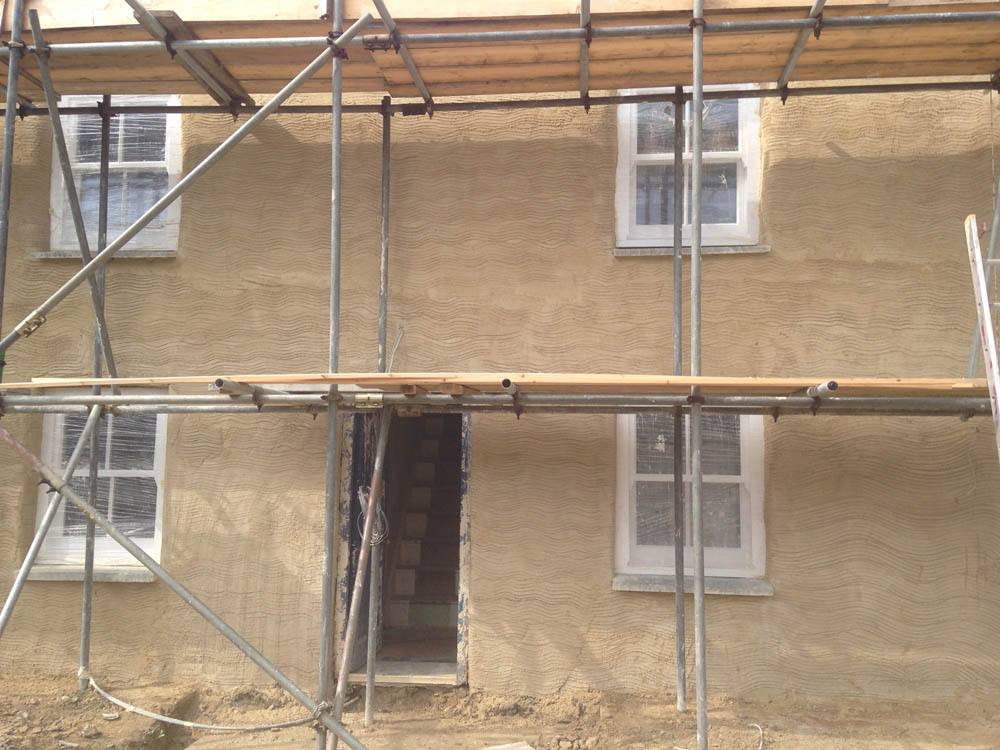
When plastering or rendering a cob wall with lime, there are generally two to three different coats applied, which are built up layers:
- Dub coat: filling in any large recesses in the wall. This only really applies to the restoration of old cob walls. Hopefully your new walls will be in good enough condition to forego the dub coat.
- Scratch coat: This is the first full coat to be applied to a cob wall. It is called a scratch coat or scatt coat because it is ‘scratched up’ to provide a key for the next coat. This coat helps iron out any protrusions or small recesses in the wall to create a smooth surface for the topcoat.
- Final coat: This is the smooth finish coat onto which the lime wash is applied.
- Lime wash: this is the final protective and decorative lime paint finish, which can be colours with natural pigments. Read more about applying lime wash here
Making lime mix with Natural Hydraulic Lime (N.H.L 2 and N.H.L 3.5)
We have had good results using both N.H.L 2 and N.H.L 3.5 on cob walls. Use the 3.5 where there is more exposure to the weather, such as driving rain andN.H.L 2 more for cob use.
Mixing with N.H.L limes is exactly the same as making a mix with lime putty, only more water is needed because the N.H.L comes in a dry powder form. Another key difference is that because the N.H.L limes set under water and go off much quicker, you must omit the storing stage described above.
The N.H.L mix once left to stand for a short length of time can be applied. Also if left in the barrow or mixer overnight can be mixed up the next day and used as normal.
Wear a mask when shovelling N.H.L lime powder into the mixer, as the fine particles will fill in the air and are not good to inhale.
Please ALWAYS use personal protection equipment, masks, gloves and goggles.
Get a quote from the experts in Cob & Lime Restoration and Renovation Work...
Office: 01726 883388 (Mon-Thur 9am - 4.30pm) or Mobile: 0797 993 4678 (anytime) or submit an enquiry here
